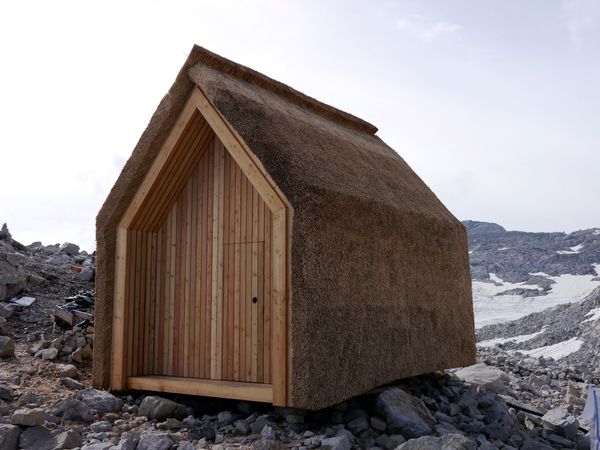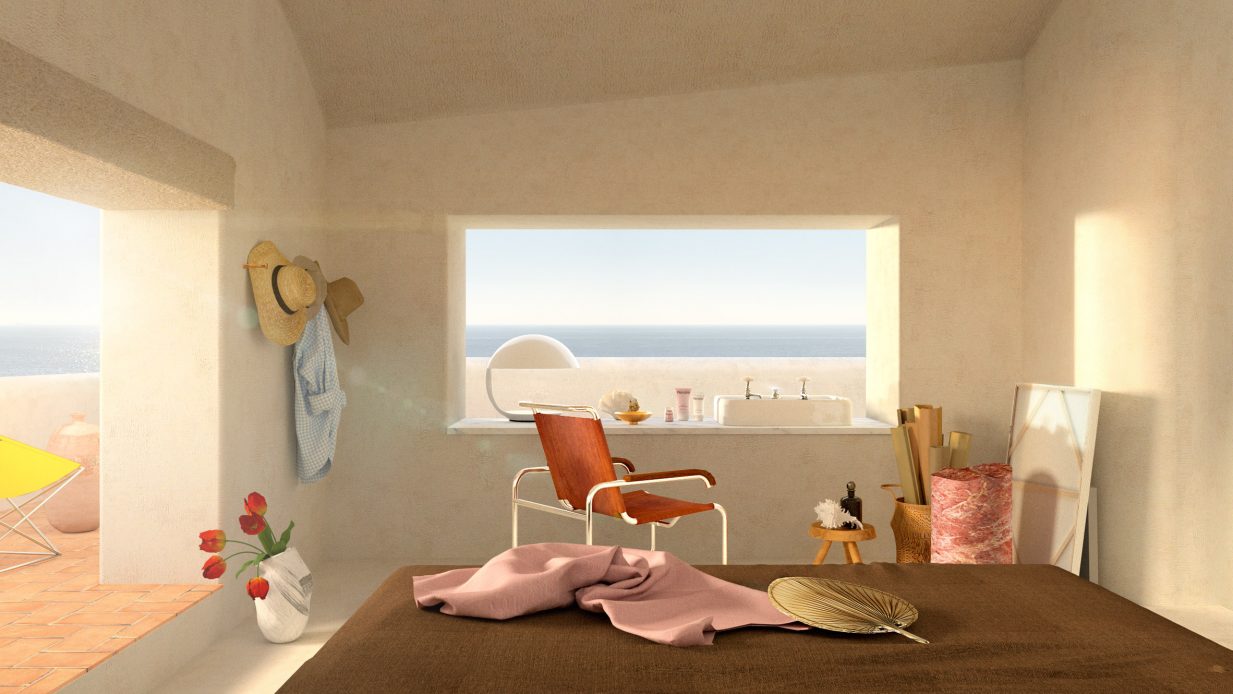It didn’t start during the quarantine, but being isolated and stuck within the four walls for sure gave a great momentum to the dreamscape movement, that is, spaces created with artificial, dreamy 3D visualization.
Digital renders have formed an integral part of architects’ and designers’ practice for a long time now. The technology has reached a point where many times it is simply impossible to determine whether what we see is a visualization on the screen or the photograph of an existing place. Early this year, for example, the whole internet was trying to guess whether the image of a restaurant designed for Budapest is a render or reality: it was the latter, as it later turned out.

Media artists discovered 3D visualization software too, and they realized it was the perfect terrain for some daydreaming. And the architects who got fed up with the limits imposed by their orders also escaped to the utopian world of renders.
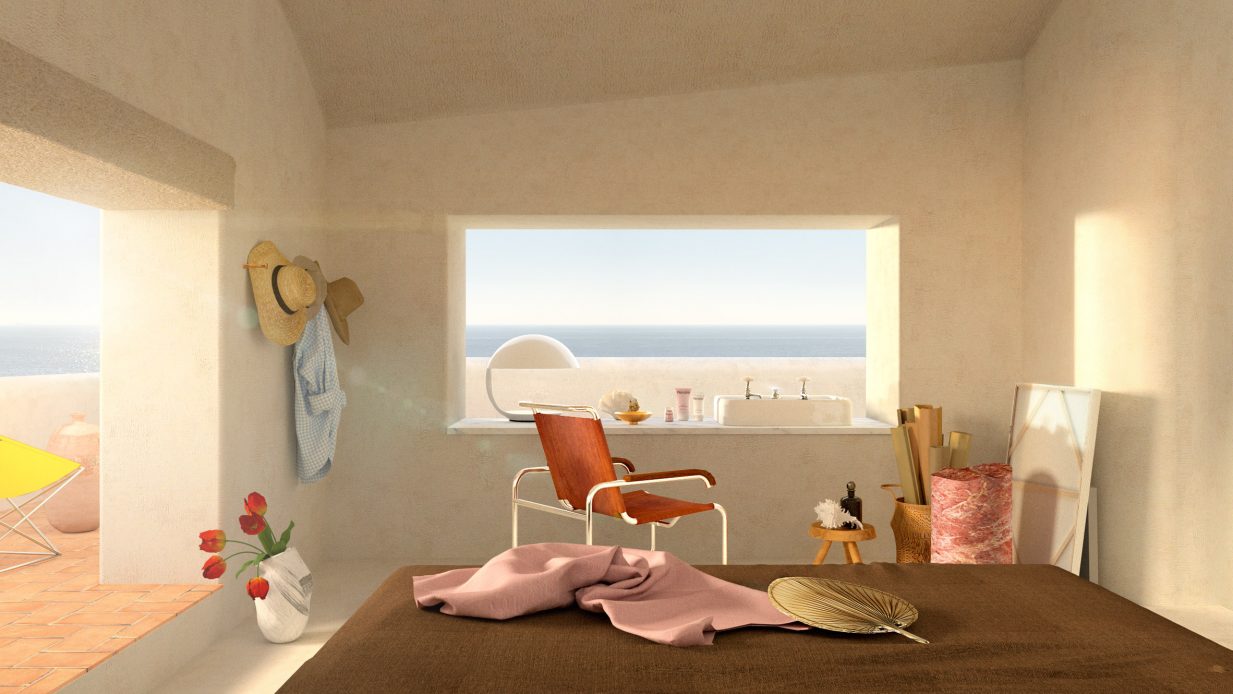
Then the trend became a movement, gaining more and more power through the several months spent in quarantine: the designers’ imagination ran even wilder within the four walls. Even though they seem to be a perfect utopia, according to their originators these spaces do not differ from reality too much. One of the most renown representatives of digital art, Paul Milinski puts it like this: “Through the juxtaposition of realities, these pieces urge us to inspire change in how we treat the Earth. Within the captured mood, they are designed to transport you along pathways that illustrate a potential future and offer a chance to wonder and escape.”

Charlotte Taylor, the creative director of Dello Studio in London also creates her dreamy, soft minimalist spaces with the help of digital art, in which she likes to experiment with things that she also tends to use in composing real interiors later on.
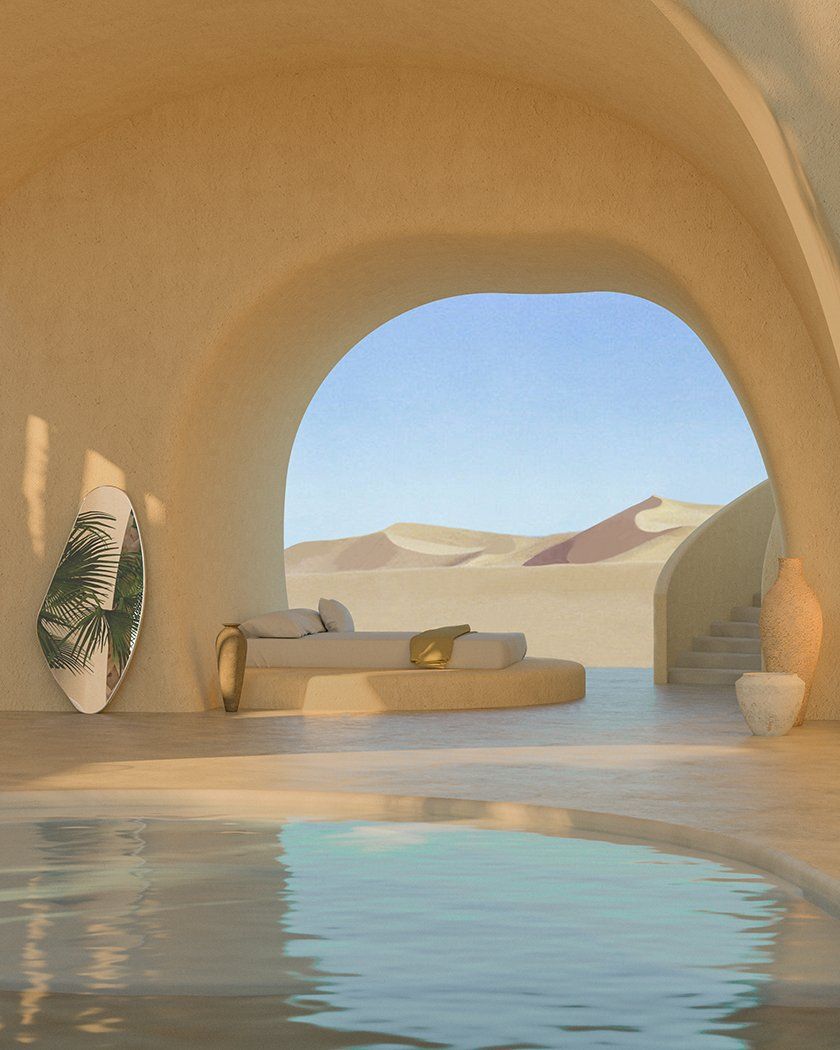
A separate publication has also been made about the dreamscape movement: in April 2020, a beautiful volume was published by Gestalten publishing house, showcasing the most prominent representatives of the trend and their designs, and we can also learn more about the philosophical-psychological background and antecedents of the movement.
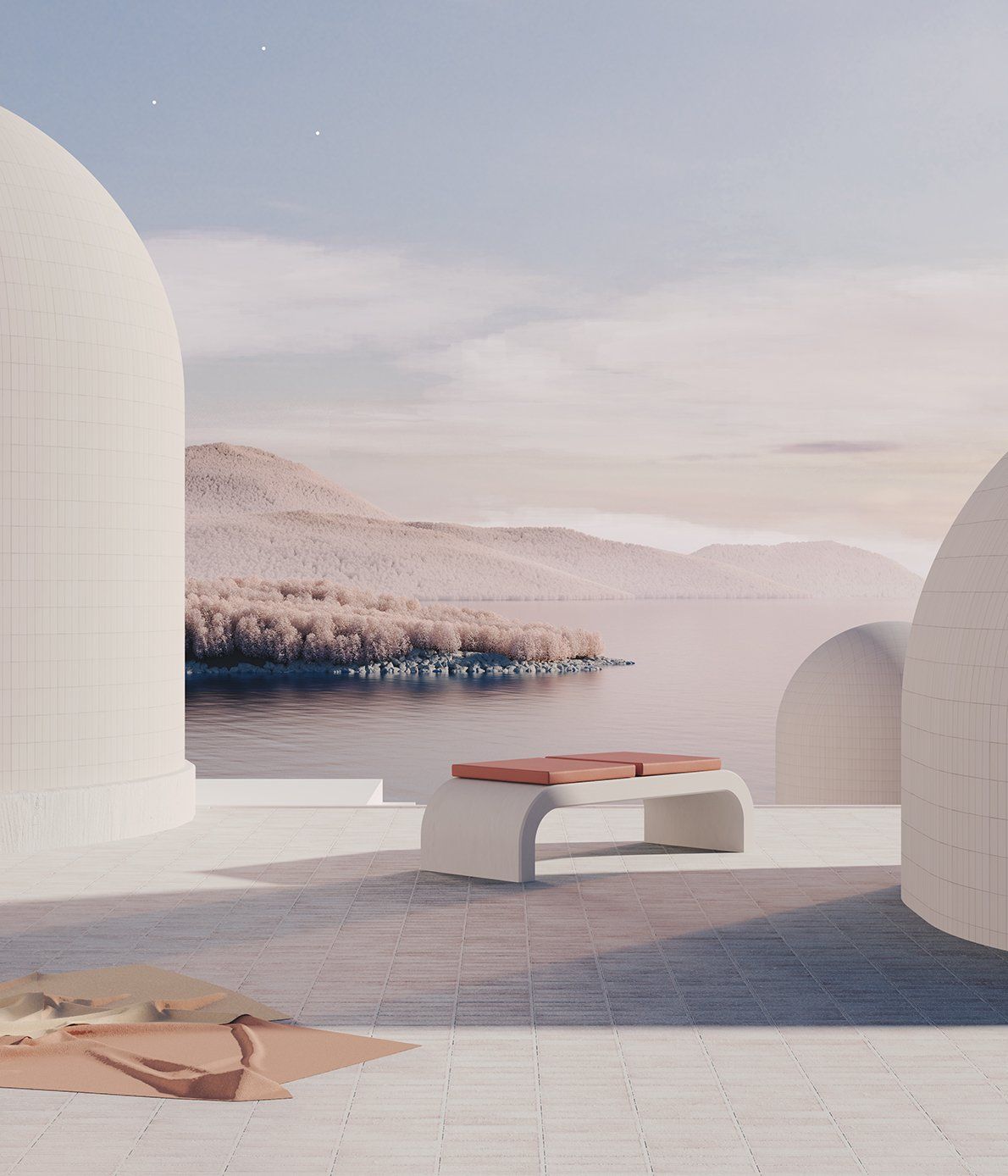
The trend is particularly interesting also because while it draws on the past a lot – the impacts of Surrealism and postmodern architecture is prominent, for example –, it is still driven by modern technologies and social media. “On Instagram, user habits are regulated by the platform, and “likes” feed an algorithm that defines what is trending. In this digital echo chamber, trends spread memetically. The visual motifs common in dreamscapes – opalescent orbs, pink skies, curved doorways, swimming pools – recur across the platform in images of both art and life“ – elaborated Rosie Flanagan, the author of the publication in the article written for the website of Gestalten.
Even though the majority of these dreamy renders remain on the level of designs, they can influence our reality, too, claims Rosie Flanagan. The author raises the question: if architects and designers escape the limits of reality in the course of dreaming in 3D, will it influence real design? If so, then these are not only visions, but the preludes of a new world.
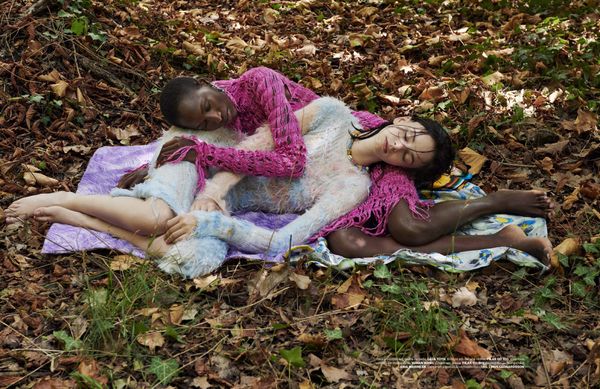
Hungarian designer in Vogue Portugal’s latest issue
